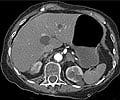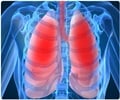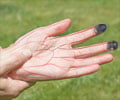A new study has found that second-hand smoke from smokers clustered outside establishments, which bans the fag, is posing a health hazard of its own, as there has been an increase of pollutants
A new study has found that second-hand smoke from smokers clustered outside establishments, which bans the fag, is posing a health hazard of its own, as there has been an increase of pollutants from it.
The study was conducted by a team of researchers led by Luke Naeher at the University of Georgia College of Public Health."Athens is a college town, and we have thousands of college kids standing shoulder to shoulder outside bars and restaurants on weekend nights. In select areas outside certain establishments, we believe many of these young people are exposed to elevated levels of second-hand smoke," Naeher said.
As part of the study, to see how much second-hand smoke was being created in these areas, researchers measured carbon monoxide and small particles, known as PM2.5, which penetrate deep into the lung, in these people.
Researchers went downtown for four weekend afternoons and evenings and measured the air in front of five locations, including two restaurants, two bars and one area with no smokers, to determine how much of these substances came from smoke, as these substances are found in second-hand smoke as well as car exhaust.
They measured the particles and carbon monoxide every 30 seconds, and then every five minutes they counted the number of cars, smokers and non-smokers who passed by.
Researchers found that a rise in the pollutants was associated with an increase in the number of smokers, and not with motor vehicle traffic.
Advertisement
The researchers are conducting a follow-up study in which they will collect urine and saliva samples from students to look for chemicals that are specific to cigarette smoke, which should provide more definitive data about how much secondhand smoke people congregating outside bars and restaurants are exposed to.
Advertisement
The findings of the study were presented at the American Thoracic Society 2007 International Conference.
Source: ANI
MED/V











